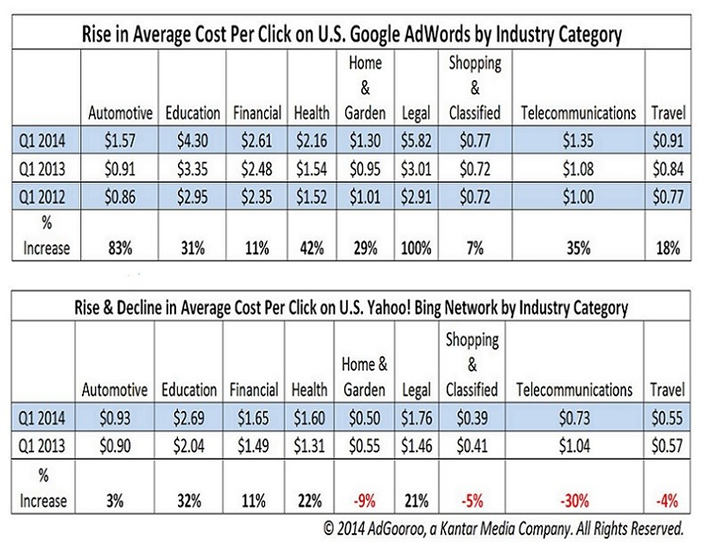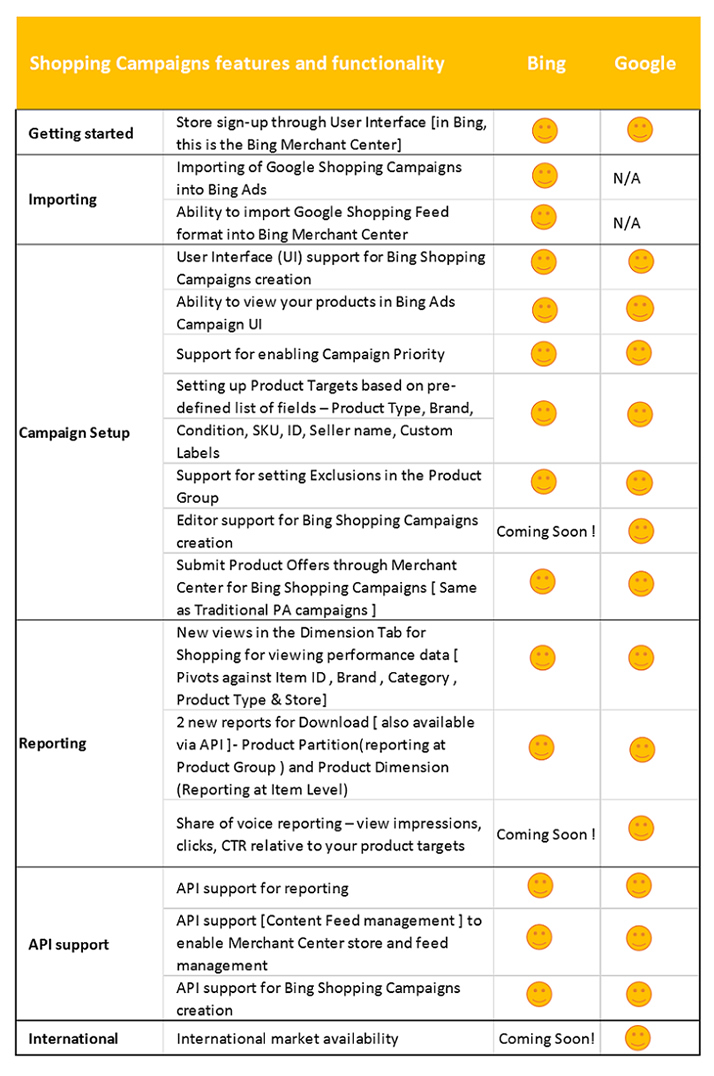Google vs. Bing Ads: Different but Both Worth Your Time
.jpg)
Google has been losing market share for desktop searches. Currently, with less than 64 percent of the market (according to comScore, see below), it's at its lowest point in five years. (However, as Search Engine Land points out, that doesn’t include mobile searches.)
Meanwhile, Bing has hit a milestone with its 21 percent of the market. Add to this the fact that Yahoo – and now AOL searches – are powered by Bing and have over 13 percent of the market, and it seems that Google might be slowly leaking users and shares to Microsoft.
.jpg)
Still, for the time being, Google is very much in the lead over Bing. Here, we'll take a look at some of the similarities and differences between these two search giants and their advertising options.
What's Happening at Bing?
Let's dive into some industry news on Bing. In October 2015, Microsoft announced that Bing was finally profitable, perhaps in large part because of its integration with Windows 10.
Earlier in 2015, both Bing Ads and Yahoo released information on some changes to their partnership, which began in 2009 as the Yahoo-Microsoft Search Alliance. Under that alliance, Yahoo was required to run Bing Ads on desktop searches. However, the partnership was not as profitable as either company had hoped, and Microsoft wound up paying revenue guarantees to Yahoo.
Under the amended search partnership, Yahoo gained more control over desktop searches, only 51 percent of which have to carry Bing Ads. By October, Yahoo had signed an agreement with Google, calling it a complement to the services provided by Microsoft.
Still, this doesn't change the fact that Microsoft sites have been gaining an edge in the search engine landscape, and garnering some attention as a potential real competitor to Google Search.
Google and Bing Advertising Costs and Demographics
So how do Google and Bing stack up when it comes to advertising costs and target audience? We've looked at this a bit in the past, but let's go a little more in-depth.
In terms of CPC, AdWords prices ticked up 40 percent in just two years, and across nine major industry categories. Looking at the Yahoo-Bing network during some of that same period (see previous link), we see only an 18 percent rise in CPC, and in just five of those nine industry categories.
As an example, compare data from AdGooroo for Q1 2014 CPC for the legal industry. While Google's CPC was $5.82, the Yahoo-Bing CPC was $1.76.

In a side-by-side comparison of the platforms, WordStream found advertisers spending 33.5 percent less on Bing CPC than Google CPC. More than one source has suggested that due to this more modest cost, the Yahoo-Bing route is a good one to explore for smaller businesses and tighter ad budgets.
In addition to coming with different advertising costs, Google and Bing are used by different people. Google users are more likely to be under 45, use Macs and smartphones and search daily than Bing users. Bing users, on the other hand, are more likely to be over 35 and searching about business, finance and travel topics.
Generally, Google users are younger and more tech-savvy, while Bing users are older and less likely to switch to Google on their Microsoft devices (which favor Bing as a search engine). Using both ad platforms allows advertisers to reach more people and target more varied audiences.
Google and Bing Advertising Features
According to Bing itself, it differs from Google AdWords in a few important ways. First and foremost, understand that Bing Ads will only show on Bing, Yahoo and other search partners. Google ads will only show on Google and its search partners. Also recognize that the search engines may share search partners (such as Yahoo, see intro).
Ad Text
Bing discusses ad text as a differentiator. Google uses two lines, and Bing uses one but with more characters. It's important to ensure that an ad that works for one network will work for the other if you import campaigns, as the seemingly minor difference could alter how users perceive the text.
Quality Score
While both Bing and Google use a scale of 1-10 (with 10 being the ideal), they work in slightly different ways while Google throws Ad Rank into the mix.
Shopping Ads on Bing and Google
Bing Shopping Campaigns and Google Shopping are each platforms where retailers can advertise to users. Plenty of similarities exist between the two, though they are not identical.
First, Google Shopping is sort of separate from the rest of Google. Users can go there specifically to shop, and won't see ads and content about anything other than products for sale. Bing Shopping Campaigns place ads right in with regular search results.
When Bing released Shopping Campaigns to all U.S. retailers in the summer of 2015, it shared a chart comparing its shopping features with Google's. For the most part, features were pretty similar, though there are a few differences.

Both platforms use a Merchant Center as a user interface for store sign-ins, and getting started is as easy as signing up with Google or creating your store on Bing. If you already have campaigns with Google you can import these to Bing, though the reverse process is not available (or as efficient).
Setting up shopping campaigns for Bing and Google are relatively similar processes. Both offer a user interface for campaign creation and viewing products. You can set up campaign priorities and product targets. Bing plans to soon offer editor support for shopping campaign creation, something that Google already provides.
In terms of reporting, both Google and Bing give advertisers insights on product performance. Google Analytics lets you see information on traffic, metrics and data groups. Bing performance reports share some of the same metrics (click-through rate, impressions, etc.), though may not be preferred over Google Analytics.
Give Both Google and Bing a Chance!
Certainly, there is no question about which search engine and advertising platform leads the way (Google). Yet, in recent years, one in particular seems to be improving and positioning itself as a competitor (Bing). In the meantime, it can pay for merchants and advertisers to leverage both, and take advantage of the varied benefits.